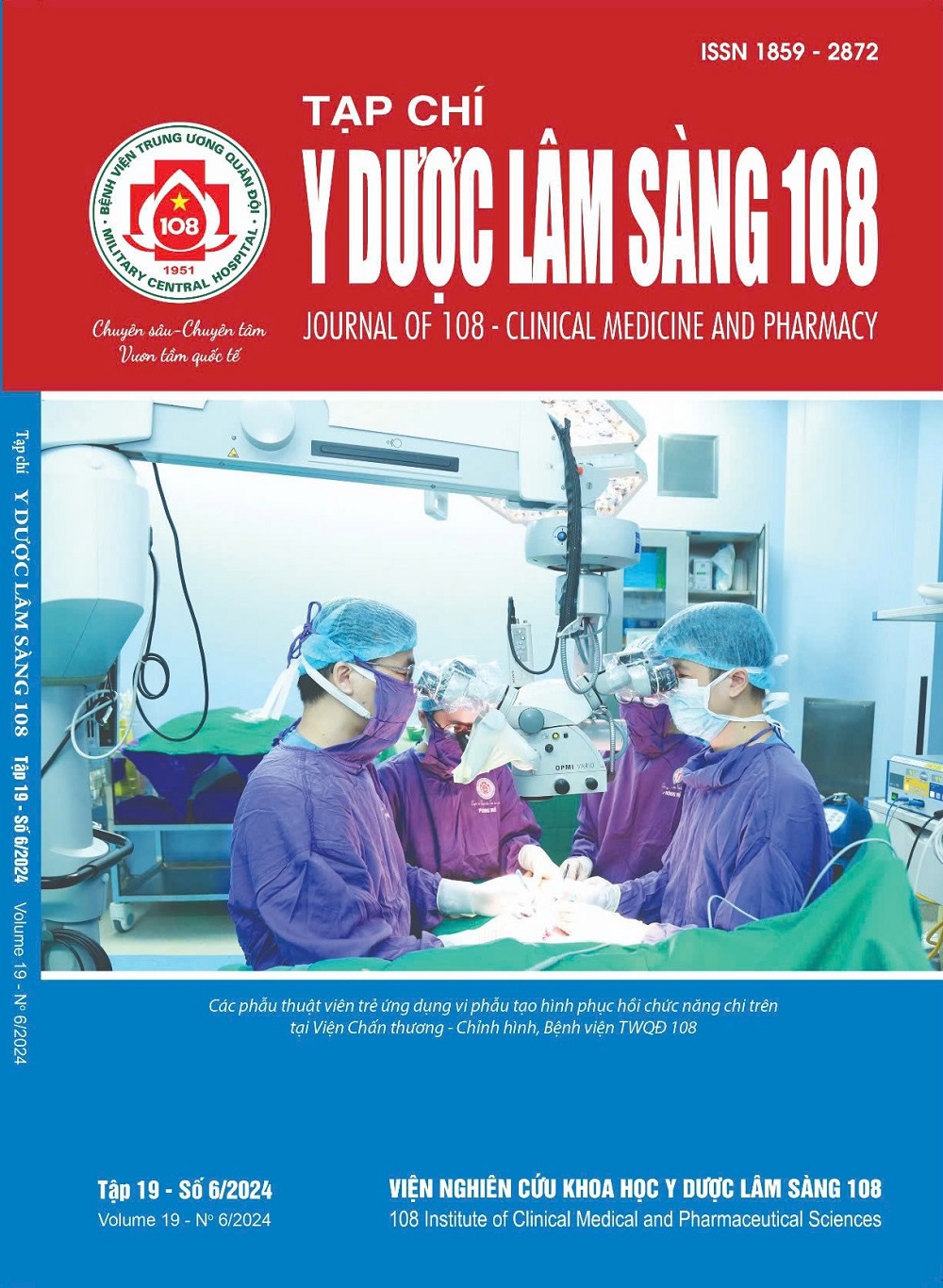The cannulation strategy in surgery for Stanford type A acute aortic dissection
Main Article Content
Keywords
Abstract
Objective: The cannulation strategy in surgery for Stanford type A acute aortic dissection. Subject and method: this study retrospectively evaluated patients underwent total aortic arch replacement surgery for Stanford type A acute aortic dissection between January 2020 and January 2023 at Cho Ray hospital. Result: A total of 102 patients were included in this study. Patients were predominantly men (2.5 males/female) with mean age of 56.45 ± 11.79 years. Cannulation strategies: Central aortic cannulation: 46 (45.2%) cases, axillary artery cannulation: 22 (19.6%) cases, femoral artery cannulation: 36 (35.2%) cases. Post-operative complications included: Renal failure required dialysis in 18 (17.8%) cases, cerebral infarction in 11 (10.8%) cases, mortality rate was 9.8% (10 cases). Conclusion: Femoral artery cannulation, axillary artery cannulation, and central aortic cannulation are likely the three major cannulation strategies in surgery for acute type A aortic dissection. Each of the different cannulation strategies has its advantages and disadvantages.
Article Details
References
2. Sơn Phùng Duy Hồng và cộng sự (2022) Kết quả sớm phẫu thuật lóc động mạch chủ type A cấp tính tại Bệnh viện Hữu Nghị Việt Đức - giai đoạn 2018-2021. Tạp chí Y học Việt Nam, 513 trang.
3. BAKEY MICHAEL E DE et al (1961) Surgical treatment of dissecting aneurysm of the aorta analysis of seventy-two cases. Circulation 24(2): 290-303.
4. Uchida K et al (2021) Results of ascending aortic and arch replacement for type A aortic dissection. J Thorac Cardiovasc Surg 162(4): 1025-1031.
5. Gudbjartsson T et al (2020) Acute type A aortic dissection - a review. Scand Cardiovasc J 54(1): 1-13.
6. Okita Y et al (2013) Total arch replacement using selective antegrade cerebral perfusion as the neuroprotection strategy. Ann Cardiothorac Surg 2(2): 169-174.
7. Di Marco L et al (2018) Acute type A aortic dissection: Rationale and outcomes of extensive repair of the arch and distal aorta. Int J Cardiol 267: 145-149.
8. Erbel R et al (2014) 2014 ESC Guidelines on the diagnosis and treatment of aortic diseases: Document covering acute and chronic aortic diseases of the thoracic and abdominal aorta of the adult. The Task Force for the Diagnosis and Treatment of Aortic Diseases of the European Society of Cardiology (ESC). Eur Heart J 35(41): 2873-2926.
9. Kreibich M et al (2019) Outcome after aortic, axillary, or femoral cannulation for acute type A aortic dissection. J Thorac Cardiovasc Surg 158(1): 27-34.
10. Ghoreishi M et al (2020) Factors associated with acute stroke after type A aortic dissection repair: An analysis of the Society of Thoracic Surgeons National Adult Cardiac Surgery Database. J Thorac Cardiovasc Surg 159(6): 2143-2154.
 ISSN: 1859 - 2872
ISSN: 1859 - 2872
